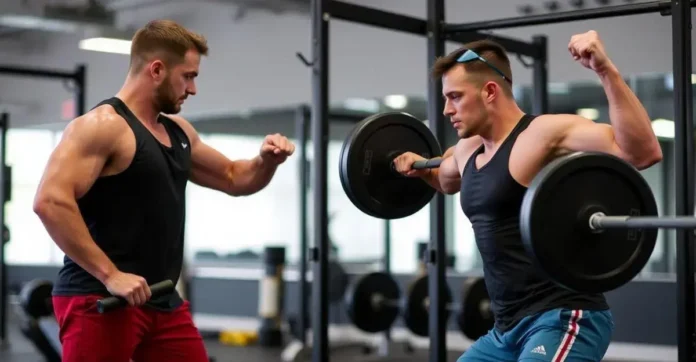“`html
How to Lift Weights and Make Gains Without Needing a Spotter
When it comes to hitting the gym, many individuals find that having a workout partner can significantly enhance their motivation and accountability. A gym buddy can inspire you to show up consistently and even push you to lift heavier weights. However, when the focus shifts to making actual gains and progressing in strength training, the journey often becomes a solitary one. Relying on a spotter may provide a safety net, but it can also lead to dependence, potentially stalling your progress. So how can you effectively lift weights and make gains without needing a spotter? Here are some essential tips to help you become self-sufficient in your strength training.
1. Understand Your Limits
Before you even step into the gym, it’s crucial to have a clear understanding of your current strength level. This knowledge allows you to choose appropriate weights for your exercises, enabling you to challenge yourself without risking injury. Start with weights that you can lift with proper form for the full range of motion; the objective is to gradually increase the weight as you gain strength.
2. Implement Progressive Overload
Progressive overload is the cornerstone of strength gains. This principle involves gradually increasing the weight, frequency, or number of repetitions in your workouts. To optimize your training:
- Increase Weight: Aim for small increments in weight to continue challenging your muscles.
- Add Repetitions: If you’re unable to increase the weight, consider adding more reps to your sets.
- Change Up Your Routine: Occasionally modifying your exercises will also help stimulate muscle growth.
3. Use Safety Equipment
When lifting heavy weights alone, prioritize safety to prevent injuries:
- Use a Power Rack: If available, a power rack with safety bars allows you to lift heavier weights without a spotter. If you find yourself struggling, the bars will catch the barbell.
- Invest in Weightlifting Straps and Belts: These can help provide additional support during your lifts, improving your stability and grip.
4. Make Use of Machine Weights
For those exercises where you might typically require a spotter—like bench presses or squats—consider using machines instead. Weight machines can guide your movements and ensure that you maintain proper form without needing assistance.
5. Focus on Bodyweight Exercises
Incorporating bodyweight exercises into your routine can be an effective way to build strength without the need for heavy weights. Movements like push-ups, pull-ups, and squats can push your limits and develop muscle while being safer to perform solo.
6. Establish a Solid Workout Routine
Creating a well-balanced workout routine is essential to ensure that you target all your major muscle groups. A structured plan will help you stay focused and allow you to track your progress effectively. Elements to consider include:
- A Warm-Up: Always begin with a proper warm-up to prepare your body and prevent injuries.
- Balanced Exercises: Incorporate compound movements, such as deadlifts and squats, alongside isolation exercises to build overall strength.
- Rest and Recovery: Factor in rest days to allow your muscles to recover and grow.
7. Listen to Your Body
Pay close attention to how your body feels during and after each workout. If you feel fatigued or experience pain, it may be a sign that you’re lifting too much weight or overtraining. Know when to push your limits and when to step back.
8. Stay Mentally Engaged
Lifting weights alone requires a strong mental focus. Set specific goals for your training sessions and visualize your progress. Keeping a training log can also motivate you as you track your achievements over time.
Conclusion
Lifting weights solo doesn’t have to mean sacrificing gains or safety. By following these strategies, you can build strength, enhance your performance, and make significant gains—all while developing independence in your training regimen. Remember that while having a partner can be beneficial, the journey to strength and fitness is ultimately a personal one. Trust in your abilities and have confidence in your workouts, and you’ll notice how your hard work pays off. There’s no question that having a gym partner helps keep you accountable and consistent with your workout sessions. However, when it comes to making real progress, the journey remains a personal one. In this regard, Glass has observed that many individuals depend too heavily on their spotter to lift weights.
“`
